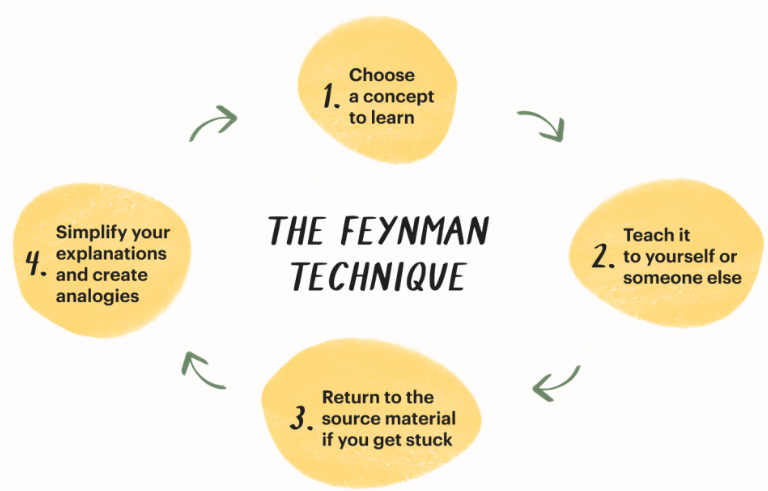Explore & Expand
Mastering the Feynman Learning Technique: Avoiding Common Mistakes for Effective Learning
The Feynman learning technique is an incredibly effective learn method named after the eminent American physicist Richard Feynman. This technique involves explaining complex concepts in simple language, as if teaching a 12-year-old child. By articulating information conversationally, students gain a deeper comprehension of the material, allowing for improved retention and application.

At its core, the Feynman technique leverages the learning benefits of teaching. Research shows that individuals learn information more thoroughly when they have to explain it to others in an understandable way. This process consolidates knowledge, reinforces understanding, and unveils any gaps that need to be addressed.

However, many students make crucial mistakes when first implementing this technique, preventing them from reaping the full rewards. By being aware of these pitfalls, students can optimize their use of this innovative study strategy.
1. Attempting to explain a concept before you have fully learned it yourself.
The Feynman technique is not meant for initial knowledge acquisition. Rather, it is a tool for taking a piece of information you are reasonably familiar with and transforming your decent understanding into an excellent, unwavering grasp. If you try explaining something you have just been introduced to, you are likely to cement fundamental misunderstandings and oversimplifications. Only use this technique after you have put in the work to comprehend the core ideas.

Once you have done the learning, avoid the mistake of explaining the concept only once. The process of articulating information conversationally does wonders for welding knowledge into your mind. However, like any learned skill, repeated practice over time is essential for maximal retention. After explaining a concept, use flashcards or spaced repetition software to regularly review your explanation. This reinforcement embeds the information into your long-term memory. Without ongoing repetition, you are likely to forget many of the details in a matter of days.
2. Relying on written summaries instead of verbal explanations.
Do not simply write up complex ideas in your own words. While useful for highlighting key points, this process does not provide the deep learning benefits of explaining concepts aloud, as if to a student. When you describe information conversationally, you are forced to put ideas into easily digestible words and connect concepts clearly. This leads to refined understanding and improved memory encoding. Replace written summaries with succinct verbal explanations.

3. Applying this technique to unimportant details, rather than reserving it for foundational concepts.
The Feynman method is ideally suited to big ideas that form a framework for thinking about a topic. Do not get bogged down attempting to Feynman minor details like the names of each phase. Internalize the big concepts with this technique to construct a solid knowledge framework.

4. Failing to simplify explanations enough.
To emulate a great teacher like Feynman himself, describe concepts at a very basic level. Use analogies, examples, metaphors, and straightforward language. If you find yourself relying on technical jargon and complex terminology, that indicates your understanding is likely still hazy. Continue distilling and clarifying your explanation until it is crystal clear. The ultimate sign of comprehension is the ability to articulate something in easy-to-grasp language.

5. Do not treat this technique as a hassle or rush through it.
Set aside quality time to prepare, write some brief notes if helpful, and practice explaining concepts aloud. The effectiveness stems from the detailed thinking and processing required to simplify ideas. If you only give it a half-hearted effort, you will not gain the full benefits. Remember that mastering challenging academic material requires rigor and perseverance. Follow Feynman’s example – he was famous for patiently explaining ideas in meticulous detail, exemplifying this dedicated mindset.

By avoiding these common pitfalls, students can harness the immense power of the Feynman learning technique. Invest the time upfront to thoroughly comprehend core concepts. Then leverage the technique to convert this basic understanding into true mastery. Explain each idea conversationally, concisely, and simply. Reinforce through ongoing spaced repetition. With deliberate practice, this approach ignites the deepest levels of learning, allowing rapid recall and flexible application. When utilized effectively, the Feynman technique can elevate academic performance to new heights across subjects.


